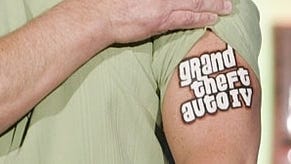Child of Eden
Adam and Eve it.
The language of video games is long established. Mario verbs such as 'jump' and 'pound' joined Pong's 'deflect', Space Invaders' 'shoot' and Zelda's 'explore' in the medium's formative years to build a basic vocabulary that few deviate from even now, thirty-odd years down the line. Child of Eden, pseudo-sequel to Tetsuya Mizuguchi's seminal trance shooter Rez, is notable then for adding two new words to gaming's lexicon: 'grasp' and 'splay'.
These actions occur on our side of the screen where, 99 per cent of the time, video game players merely twitch thumbs to exert their will. But here, you stand in front of the television, watched by the unblinking eye of the Kinect camera, painting on-screen targets - up to eight at a time - with sweeps of your grasping hand.
Then, when you are ready, you splay your fingers outward, as if throwing a fistful of sand away from yourself. In one motion a clutch of tracer bullets tears off into the screen toward the highlighted targets. 'Grasp' and 'splay': Mizuguchi's lingiustic gift to motion-control gaming.
Child of Eden - which can be played either with Kinect or using a standard controller - is an on-rails shoot-'em-up. This is important to state from the outset, because the lights and music and idiosyncratic ambiance can disguise what's going on at a mechanical level. You must shoot them before they shoot you. If your health bar - represented sometimes as petals on a flower, other times as dials on an art deco clock - is emptied, then it's game over and you must try again.
There are two types of fire: lock-on rockets (fired with the right hand) and a machine-gun volley of purple dots (fired with the left). Enemies are susceptible to one or the other. There are end-of-level bosses with attack patterns and weak spots and, at the climax of each of the five core stages, you are awarded a rating and score based on your performance.
Players who value arithmetic over art can rest easy: Child of Eden is an orthodox video game, with criteria for success and failure, ranks to achieve, percentages to claim, leaderboards to climb and prizes to win.
But to reduce the game to its structural components is to miss the wood for the trees. As with Rez, Mizuguchi appears to have a higher purpose than score attack, despite his own Sega Rally arcade heritage. Child of Eden is an audio-visual journey in every sense of the word. It takes you from one place and one state to another; it hopes to leave you a different person to the one who embarked upon it.
Your bullets, such as they are, have a rhythmic quality, each target struck sounding out a quantized note that adds seasoning to the music that rolls steadily underneath. That music, composed by Mizuguchi's band Genki Rockets and friends, builds to a series of postponed then protracted climaxes; the game draws you in and carries you along their sound waves, part spectator, part conductor.
In contrast to Rez's digital, angular enemies, Child of Eden's targets are organic. You often shoot not to destroy, but to build; your bullets can be catalysts for creation, causing flowers to blossom when you shoot a plant, or triggering deep-sea creature shapes to evolve from one form to the next. There's a feeling that, while this world is filled with peril, it's also filled with creative opportunity. Your role in it is not merely to tear down, as in so many shooters, but to build up.
This theme is threaded into the simplest of narratives. Lumi, the first human child born on a space station, is being digitally reconstructed by a future generation who wish to view her memories. But she's under threat of attack by a virus, which must be expunged to allow her memories to fully reveal themselves. It's a whisper of a story (originally penned in a poem Mizuguchi wrote after Rez) and it's told not through cut-scene or dialogue but through colour, shape and glimpses of the filmed actress who plays the role of the girl you are sent to save.



